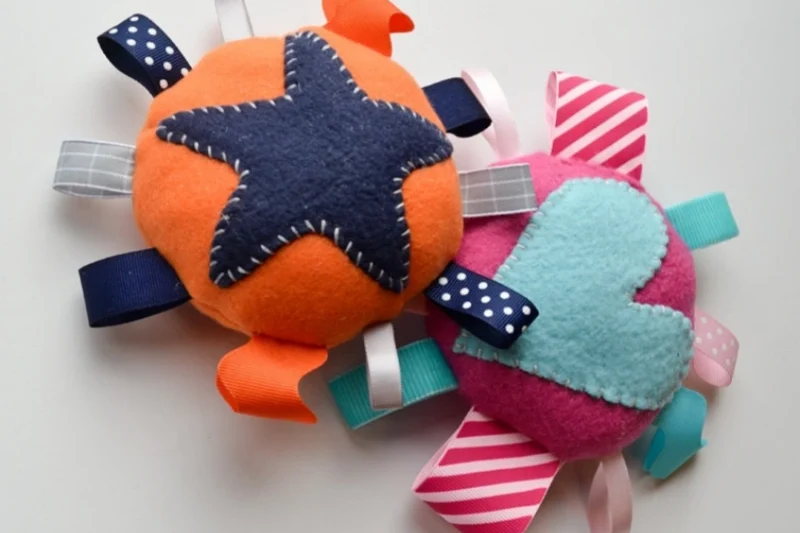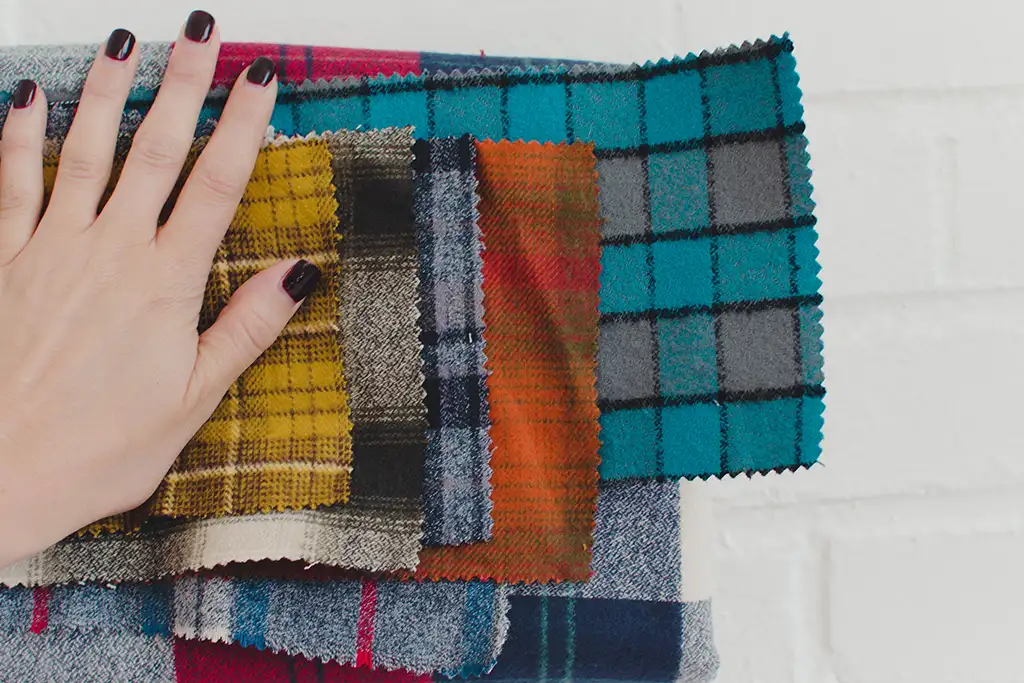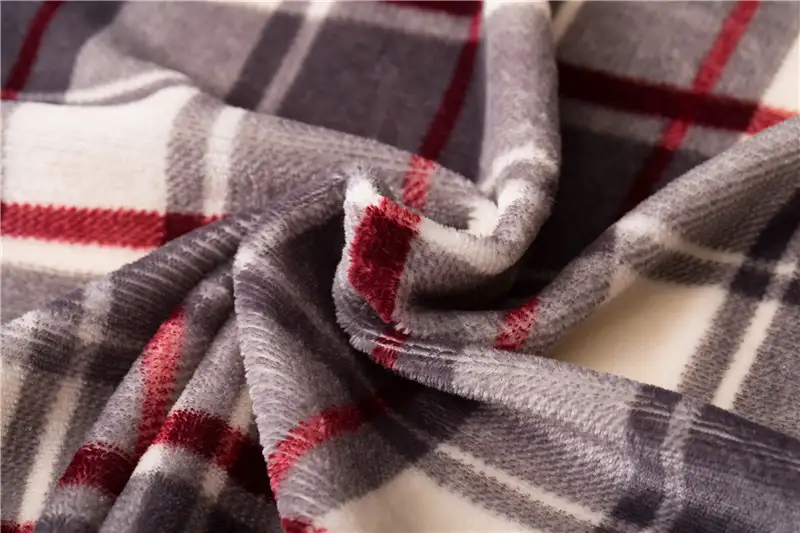Start with a brief introduction about the importance of understanding different fabric types. Mention the focus of the blog post, which is comparing fleece and flannel, two popular fabric choices for warmth and comfort.
What is Fleece Fabric?

Begin this section by defining what fleece fabric is. Discuss its origin, characteristics, and common uses. Highlight its key features such as its light weight, warmth, breathability, and moisture-wicking properties. Discuss the different types of fleece, such as microfleece and polar fleece, and their specific uses.
What is Flannel Fabric

Next, define flannel fabric. Discuss its history, characteristics, and common uses. Highlight its key features such as its softness, warmth, and versatility. Discuss the different types of flannel, such as cotton flannel and wool flannel, and their specific uses.
Fleece vs Flannel Fabric

Fleece and flannel are two popular fabrics known for their warmth and comfort. Despite their similarities, they have distinct characteristics that make them unique. Here’s a detailed comparison of the two:
Fleece Fabric:
Fleece is a synthetic fabric made from polyester. It’s known for its exceptional warmth, making it a popular choice for winter clothing and blankets. Here are some key features:
- Warmth: Fleece is a very warm fabric. It’s designed to mimic the warmth of wool, but it’s much lighter in weight.
- Weight: Despite its warmth, fleece is a lightweight fabric. This makes it ideal for layering in cold weather.
- Moisture-Wicking: Fleece is excellent at wicking away moisture. This makes it a popular choice for activewear, as it can keep you warm without making you feel sweaty or clammy.
- Durability: Fleece is a durable fabric. It resists pilling, and it’s easy to wash and dry.
Flannel Fabric:
Flannel is a soft, woven fabric that can be made from cotton, wool, or synthetic fibers. It’s known for its softness and coziness. Here are some key features:
- Warmth: Flannel is a warm fabric. It’s often used for winter bed sheets, pajamas, and shirts.
- Softness: Flannel is incredibly soft to the touch. This makes it very comfortable against the skin.
- Weight: Flannel is a medium-weight fabric. It’s heavier than fleece, but it’s still suitable for layering.
- Breathability: Flannel is a breathable fabric. This means it can keep you warm without making you feel overheated.
Choosing Between Fleece and Flannel

Choosing between fleece and flannel really comes down to personal preference and intended use, as both fabrics have their own unique advantages. Here are a few factors to consider when making your decision:
1. Purpose: If you’re looking for a fabric for outdoor activities or sportswear, fleece may be the better option due to its lightweight nature and excellent moisture-wicking properties. It’s also a great choice for baby clothes because it’s very soft and easy to wash. On the other hand, flannel is a fantastic choice for bedding and winter clothing due to its softness and warmth.
2. Climate: If you live in a very cold climate, fleece might be the better option because it provides a lot of warmth without adding a lot of weight. However, if you’re in a milder climate, flannel could be a better choice because it’s breathable and comfortable.
3. Care: Fleece is generally easier to care for than flannel. It’s machine washable and dries quickly. Flannel, while also machine washable, can shrink if not properly cared for, and it may require ironing to keep it looking its best.
4. Comfort: Both fabrics are comfortable, but they feel different. Fleece is smooth and feels somewhat similar to velvet, while flannel has a more textured, cozy feel to it.
5. Sustainability: If sustainability is a concern for you, flannel might be the better choice, especially if you opt for flannel made from organic cotton or wool. Fleece, while recyclable, is made from petroleum derivatives.
Brushed Cotton Fabric vs Flannel

Brushed cotton fabric and flannel are both popular choices for clothing and bedding, especially during colder months due to their softness and warmth. While they share some similarities, there are also distinct differences between the two.
Here’s a comparison table highlighting the key differences between brushed cotton fabric and flannel:
| Feature | Brushed Cotton Fabric | Flannel |
|---|---|---|
| Fabric Structure | Typically 100% cotton | Typically cotton, wool, or blends |
| Softness | Exceptionally soft | Very soft and plush |
| Warmth | Lighter and less insulating | Warmer and more insulating |
| Breathability | Breathable | Breathable |
| Durability | Durable | Very durable |
| Seasonality | Year-round use | Fall and winter use |
This table provides a concise overview of the differences between brushed cotton fabric and flannel, making it easier to understand their distinct characteristics and suitability for different purposes.
Let’s explore the characteristics of each:
Brushed Cotton Fabric:
1. Fabric Structure: Brushed cotton fabric is typically made from 100% cotton fibers. It undergoes a mechanical brushing process that raises the fibers on the surface of the fabric, creating a soft and fuzzy texture.
2. Softness: Brushed cotton fabric is known for its exceptional softness, making it comfortable to wear against the skin. The brushing process gives the fabric a plush feel, similar to that of flannel.
3. Warmth: While brushed cotton fabric provides some warmth, it is generally lighter and less insulating compared to flannel. It is suitable for milder climates or transitional seasons when heavy insulation is not required.
4. Breathability: Cotton is naturally breathable, allowing air to circulate through the fabric. Brushed cotton fabric retains this breathability, making it suitable for both clothing and bedding.
5. Versatility: Brushed cotton fabric is versatile and can be used for a wide range of clothing items, including shirts, dresses, pajamas, and linings. It is also used for bedding, such as sheets and pillowcases.
Flannel:

1. Fabric Structure: Flannel can be made from various fibers, including cotton, wool, or synthetic blends. Traditionally, flannel is made from wool, but cotton flannel is more common today. Flannel undergoes a brushing process similar to brushed cotton but is typically brushed on both sides for added softness and warmth.
2. Softness: Flannel is renowned for its softness and cozy feel. The brushing process creates a fuzzy surface on both sides of the fabric, making it exceptionally comfortable to wear or sleep on.
3. Warmth: Flannel is thicker and more insulating than brushed cotton fabric, making it ideal for colder temperatures. It traps heat close to the body, providing warmth and comfort during chilly nights.
4. Durability: Flannel is known for its durability and resilience. It holds up well to repeated washing and wear, making it a long-lasting choice for clothing and bedding.
5. Seasonality: Flannel is commonly associated with fall and winter due to its warmth and coziness. It is often used for cold-weather clothing such as shirts, pajamas, and jackets, as well as bedding such as sheets, duvet covers, and blankets.
Key Differences:
- Warmth: Flannel is warmer and more insulating than brushed cotton fabric, making it better suited for colder temperatures.
- Softness: Both fabrics are soft and comfortable, but flannel tends to have a thicker, more plush feel due to its double brushing process.
- Durability: While both fabrics are durable, flannel is often considered more resilient and long-lasting, especially when made from high-quality materials.
- Seasonality: Brushed cotton fabric is suitable for year-round use, while flannel is typically reserved for fall and winter due to its warmth.
Conclusion
Wrap up the blog post by summarizing the key points about fleece and flannel fabric. Reiterate their similarities and differences, and the factors to consider when choosing between them. Encourage readers to feel and test both fabrics before making a decision, as personal preference plays a big role.
This comprehensive outline should provide a solid foundation for your blog post on fleece vs. flannel fabric. With this structure, you’ll be able to inform and guide your readers in their fabric selection process.
